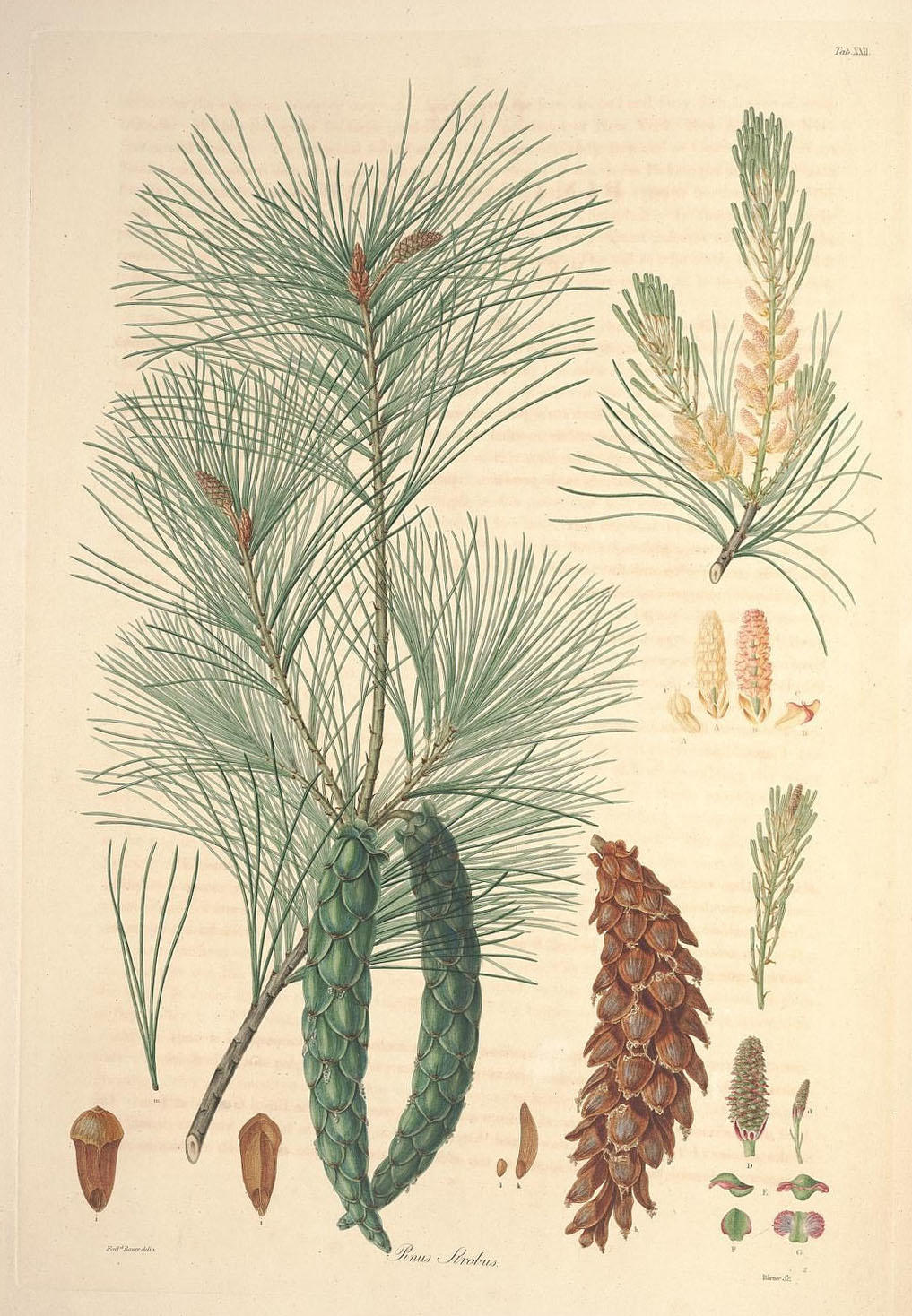
Illustration of the cones and needles of the White Pine (Pinus strobus), from 'A description of the genus Pinus,' by Lambert. London: J. White, 1803-1824. See volume on BHL.
In September I shared some notes from the Brewster journals on ecological changes caused by lumbering that he noticed in the Maine woods. Here’s another passage, this one from mid-July of 1892, documenting some anthropogenic (human-caused) changes near his stomping grounds in Concord, Mass.
On July 21st, a fire broke out on a neighbor’s land near Brewster’s cabin on the Concord River. Brewster’s notes tell us that the summer of 1892 was very hot and dry in New England. Windy weather and a “careless camper” resulted in a wildfire that Brewster and neighbors periodically tried to curb over the course of a week.
He wrote on July 27th:
Another cloudless day of intense heat but with a dryer and hence less oppressive atmosphere. Wind W. to N. W., ranging greatly in force, at times dying quite away.
I spent the entire morning in the house writing but at 2 P.M. hearing that the fire at Davis's Hill had broken out again badly and that the fire department of Concord had been sent at this "eleventh hour" to suppress it I took one of my canoes and started down river.
On reaching the hill I found that the fire had, since yesterday, spread over practically the whole unburned portion. The flames had been everywhere smothered by throwing sand over the leaves and the two men left as watches had no difficulty in suppressing them when, as happened every little while, they blazed up again but smoke was rising from a hundred different places where the fire was smoldering beneath the surface, eating its way slowly but relentlessly deep into the ground and doubtless undermining and destroying most of the fine old trees for which these woods are, or perhaps I should now say have been, famous.
I dug down about several of the largest pines and found not only the superficial mat of needles & leaf mould but even the sandy loam beneath a flowing mass of fire while roots as large around as my leg were reduced, outwardly at least, to charcoal. In many places this subterranean fire had excavated pits several feet in diameter and from one to four feet in depth while in others what looked like solid ground was completely undermined for yards giving way beneath the slightest pressure of the foot. A pail-full of water poured into such a cavity had little effect other than making the furnace beneath hiss angrily for a moment and send up a cloud of steam instead of smoke.
There was but one attractive feature connected with this deplorable fire and that was the smoke which had a rich, resinous, almost fruity aroma more pleasing to the nostrils than the choicest incense. It seemed the epitome of a century of growth, the fragrance of the hundred or more summers that have passed since these giant trees were young, gathered, season after season, from the south wind, from the breath of the white azalea and Clethra that grow in the neighboring swamp, from the white water lilies that float on the river, or from the myriad wild flowers that deck the adjacent fields and woods and stored carefully away by provident nature in the deep mat of fallen leaves, to be at length released by the subtle agency of fire and disseminated to the four quarters of the earth. (1892 Journal of William Brewster. Text edited with line breaks for readability.)
This post is part of a series on the collection of ornithologist William Brewster (1851-1919) at the Ernst Mayr Library, written by Elizabeth Meyer, library project assistant.

